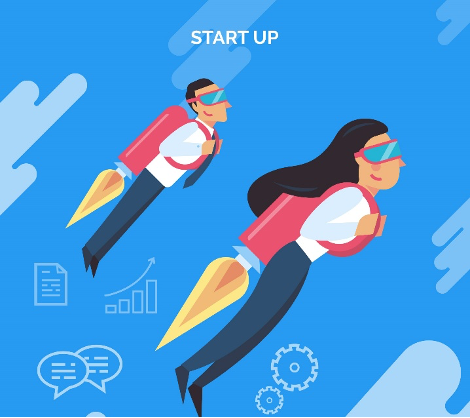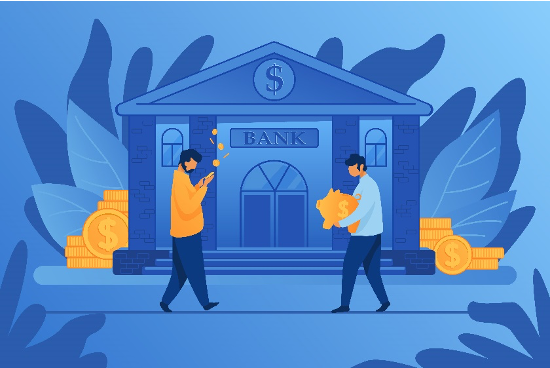Silicon Valley Bank collapse. Is centralised finance the real culprit?
Silicon Valley Bank collapse. Is centralised finance the real culprit?
Is your money really safe in your bank? How can you be sure? Are banks unshakeable?

On the 10th of March one of America’s largest banks collapsed taking down with it billions of dollars of its clients’ money. It’s the biggest bank failure since the earth-shattering financial crisis of 2007.
What really happened? Who is to blame and most important, what can you learn from it to keep your money safe?
Here’s the entire episode explained to you in super simple language.
What’s the history?
The Silicon Valley Bank was founded in the year 1983. Since its birth, it became one of the most trusted banks, especially for tech startups and venture capitalists.

The bank survived the banking crisis of 2007 and was aspiring to get on the list of the top banks in the US.
Some of the famous startups like Airbnb, Fitbit and Pinterest did their banking with SVB.
Pre-Covid sunshine

Before Covid-19 attacked and crippled the world, there was a startup boom. Many new companies were founded and venture capitalist firms put their trust in new business ideas and gave these startups a lot of money.
The economy was doing so well that some large investing companies even borrowed money from banks at low-interest rates and put them in these startups for higher returns.
Needless to say, SVB was at the core of all this business activity in the tech sector. Startup after startup, even startups with stupid ideas, got funded and they deposited their money in it. Deposits flowed in like water gushing from a fully open tap.
The problem with deposit overflow

When a bank receives deposits, it has to pay interest to the depositors. This means that it can’t let the deposits be idly lying around. The bank has to invest the money somewhere earn some returns on it, keep a little for itself and give the rest to the client.
This is why banks give loans. Banks give loans at higher interest rates while paying depositors lower rates to keep the mechanism going.
In this case, deposits were flowing in too fast for SVB to make loans to trustworthy borrowers. Thus, it came under pressure to invest the money elsewhere.
SVB’s investment plan and aspiration

SVB turned to long-term government bonds and mortgage-backed securities. SVB put in around $91 billion in these investment vehicles.
The safest investment option would’ve been short-term government bonds that SVB could encash in a matter of weeks to months. But, SVB had bigger dreams. It was already the 16th largest bank in the US. SVB wanted to take on the top 10.
So, it needed more people to bank with it. To achieve this, SVB decided to give over 2% interest on deposits when the national average was only around 1%! You can say SVB got over-ambitious or perhaps even greedy. But the truth is SVB only did what every bank does — attracting new clients by giving more interest on deposits.
Considering all this, the executives at SVB felt that long-term investments were the right option. The downside of this: SVB will have to wait for 10 years to get its money back.
Probably you can see the alarm bells ringing here. You need money to pay your depositors at any moment. But you yourself will get money only after 10 years! The perfect formula for a bank run.
Nevertheless, the funding boom was inspiring such great positivity that no one thought anything would go wrong.
Chaos hits

The wicked demon of misfortune: Covid-19 entered. All economic activity came to a grinding halt. People started losing their lives and a lot of those who were alive were barely managing to survive.
The situation was unprecedented. No one knew how to deal with the malady other than lockdown everything.
Centralised finance tries to rescue the economy

If the economic activity has to restart, people need to start buying stuff. In that way, businesses will start producing more, pay salaries to their employees and also create new jobs.
As the government and the central bank of a nation have the power to manipulate the economy in a way they feel best, the Biden government decided to put money in the hands of the people. This is what you call a fiscal stimulus. It involves many things like reducing the interest rates of borrowing, government spending on infrastructure, giving benefits etc.
The central bank of America, the Fed, brought down the interest rate of borrowing to almost zero. The aim was that people and businesses would borrow at really low rates and make use of them to spend, invest and start new businesses.
Welcome inflation and the war

The move of the Fed to increase money supply led to sky-high inflation never before seen in the US. In just a year inflation soared, to 9%, thanks to the Russia-Ukraine war which was pushing up fuel prices. Note that in pre-covid times it was around a mere 2%!
Things were getting out of hand for the Fed. Everything was getting costlier and many small businesses didn’t feel confident to take loans. The move gave only less than expected outcomes.
Inflation had to be controlled right away. The answer was to immediately raise the interest rate of borrowing. So the Fed brought up the rate from near zero to almost 5%!!!
This affected SVB adversely. You see, the price of bonds comes down when interest rates are increased. So when interest rates were increased most of SVB’s assets dipped in their value. So, if SVB wanted money, it had to sell its bonds at prices far below their original price.
Also, the Fed, for some reasons it thought legitimate, declared that it wouldn’t buy mortgage-backed securities from banks! This led to SVB’s assets getting devalued adding more trouble to SVB’s troubles.
Start of panic

Now that it was costlier for startups to take loans, they started withdrawing their deposits. This is when SVB started feeling the pinch for cash.
To make money available for withdrawals, the bank decided to sell off its investments though at a staggering over $20 billion loss! Now it wouldn’t have been as bad but for bank regulation that requires banks to hold a certain amount of capital proportional to their banking activity.
Hence SVB needed to get money immediately. So they announced that SVB would sell some of its stock and also borrow by issuing bonds. When this news came following another bank crash that happened just prior to this, panic struck.
The bank run

SVB’s clients started to think that SVB was falling into an unredeemable situation. So they started withdrawing the billions of dollars they’d deposited with the bank.
Now withdrawals were happening by the minute and before anyone could even respond, SVB ran out of cash and collapsed.
What now
The first ones to take their money out escaped. The others are now waiting indefinitely for the assets of the bank to be sold and have their money returned. It may take several months to recover their deposits.
Meanwhile, the Federal Deposit Insurance Corporation has taken over the bank and has set up a new bank with the assets of SVB to manage the situation.
What can you take away from this

The problem with governments having inordinate power over the economy seems to have a flip side too. Yes, the Fed lowered and raised the rates with the best intentions. But its decisions have their negative consequences too.
But times like this are when you feel, maybe it’s time to take decentralised finance more seriously after all. Post the bank crash cryptocurrencies started going up clearly showcasing the exasperation that people are experiencing with centralised finance.
Now it seems more sure than ever that crypto and DeFi are here to stay and will become a part of everyone’s life.
Check out our other articles for more useful information on how you can master your money.